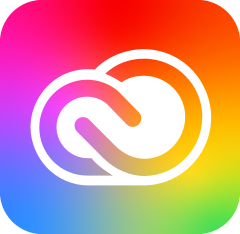
Despite being on death row, XD's features still work. Here's what you get if you're stuck with a dying tool:
XD's design tools are actually solid. The vector editing is smooth, typography controls work as expected, and the Repeat Grid feature is legitimately brilliant for designing card layouts and lists.
Repeat Grid: This is XD's secret weapon. Create a card design, select it, drag the green handles, and XD automatically duplicates and spaces everything perfectly. Change content in one card? XD updates them all intelligently. I've never seen Figma's component variants work this smoothly. The official Repeat Grid tutorial shows how powerful this feature was before Adobe abandoned development.
Component System: Not as advanced as Figma's components, but functional enough. Master components update everywhere when changed, preventing the "designer manually updated 47 buttons individually" nightmare. State management is basic but works for simple interactions like hover effects. The XD component documentation explains the state system, though it feels primitive compared to modern component architectures. Design tool comparisons consistently note XD's component limitations versus Figma's robust system.
Typography: Solid type controls with proper baseline grids and character spacing. Adobe Fonts integration means you're not stuck with system fonts. Font activation works seamlessly across Creative Cloud apps. Design reviews praise XD's typography tools, though they lack Figma's collaborative features.
Prototyping That Actually Impresses Clients

Auto-Animate: XD's crown jewel. It automatically creates smooth transitions between screens by detecting common elements. No timeline manipulation, no keyframe hell. It just figures out the tweening and usually gets it right. When you demo an Auto-Animate prototype to stakeholders, they think you spent hours on animation when it took 30 seconds to set up. The Auto-Animate tutorial demonstrates capabilities that Figma's Smart Animate still struggles to match.
Voice Prototyping: Weird feature that nobody uses, but it exists. You can prototype voice interactions for Alexa or Google Assistant. Useful if you're designing smart speaker interfaces, useless for everything else. Adobe's voice prototyping guide shows this niche capability that competitors still lack.
Prototyping Gotchas:
- Auto-Animate breaks if you rename layers between artboards
- Overlay animations glitch if you have too many nested groups
- Timer interactions reset when you navigate back to a screen
- Drag triggers only work horizontally or vertically, not diagonally
The Adobe Ecosystem Advantage

If you're already in Adobe prison, XD plays reasonably nice with its cellmates:
Photoshop Integration: Import layered PSD files without losing your mind. Layers stay intact, effects transfer over, and you're not dealing with flattened garbage. Copy layers between Photoshop and XD without export/import hell.
Illustrator Integration: Copy vectors directly without conversion issues. Complex path operations, gradients, and effects transfer cleanly. Creative Cloud Libraries sync colors and assets between apps automatically.
After Effects Integration: Export Lottie animations from After Effects and import them into XD prototypes. This workflow is genuinely impressive when it works, though the file size optimization could be better.
Adobe Fonts: Access the full font library without additional licensing costs. Fonts activate automatically when you open XD files from other team members. This prevents the "missing font" notifications that plague other design tools.
Collaboration Reality Check
XD's collaboration feels ancient compared to Figma. No real-time editing, no live cursors, no collaborative whiteboarding. Multiple people can't work on the same file simultaneously without creating merge conflicts.
Design Specs: XD generates code snippets for developers automatically. CSS, iOS, and Android output is decent, though developers still need to adapt generated code for real projects. The spacing calculations are usually accurate, but the generated CSS is verbose and needs cleanup. Compare this to Figma's Dev Mode or Zeplin's enhanced specs for more sophisticated developer handoff workflows. Developer reviews note XD's handoff limitations compared to modern alternatives.
Comments: Basic commenting system works for async feedback. Stakeholders can leave notes without XD licenses. But resolution tracking is manual - you need to remember to mark comments as resolved.
Share Links: Prototypes update automatically when you save changes, which is convenient for ongoing client reviews. Password protection works reliably. However, viewing prototypes requires decent internet since everything loads from Adobe's servers.
XD handles moderately large files without choking, though it starts struggling around 200+ artboards. Memory usage climbs steadily during long design sessions - restart XD every few hours to prevent crashes.
File Format Hell: XD uses proprietary .xd files that no other tool reads natively. Export options are decent (SVG, PNG, PDF) but complex prototypes don't transfer to other tools without significant rebuilding.
Cloud Sync Issues: Creative Cloud sync occasionally corrupts files during upload. Keep local backups, especially for critical projects. I've lost hours of work to sync conflicts that XD couldn't resolve automatically.
Version Control: Adobe's version control is basically "save and pray." No branch management, no proper conflict resolution, no rollback options. Git integration doesn't exist - you're stuck with Creative Cloud's basic versioning.
![]()
![]()
